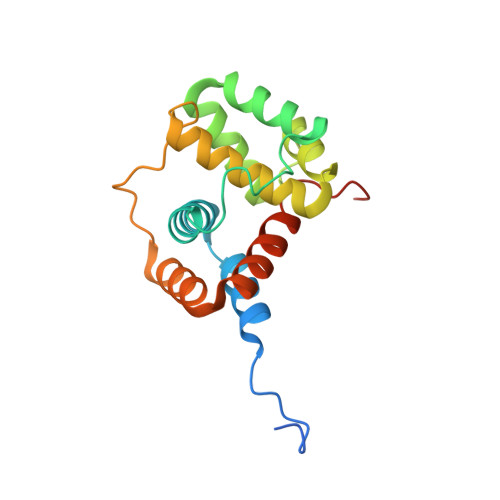Insights into energy quenching mechanisms and carotenoid uptake by orange carotenoid protein homologs: HCP4 and CTDH.
Sklyar, J., Wilson, A., Kirilovsky, D., Adir, N.(2024) Int J Biol Macromol 265: 131028-131028
- PubMed: 38521321
- DOI: https://doi.org/10.1016/j.ijbiomac.2024.131028
- Primary Citation of Related Structures:
8QX5, 8QX7 - PubMed Abstract:
Photodamage to the photosynthetic apparatus by excessive light radiation has led to the evolution of a variety of energy dissipation mechanisms. A mechanism that exists in some cyanobacterial species, enables non-photochemical quenching of excitation energy within the phycobilisome (PBS) antenna complex by the Orange Carotenoid Protein (OCP). The OCP contains an active N-terminal domain (NTD) and a regulatory C-terminal domain (CTD). Some cyanobacteria also have genes encoding for homologs to both the CTD (CTDH) and the NTD (referred to as helical carotenoid proteins, HCP). The CTDH facilitates uptake of carotenoids from the thylakoid membranes to be transferred to the HCPs. Holo-HCPs exhibit diverse functionalities such as carotenoid carriers, singlet oxygen quenchers, and in the case of HCP4, constitutive OCP-like energy quenching. Here, we present the first crystal structure of the holo-HCP4 binding canthaxanthin molecule and an improved structure of the apo-CTDH from Anabaena sp. PCC 7120. We propose here models of the binding of the HCP4 to the PBS and the associated energy quenching mechanism. Our results show that the presence of the carotenoid is essential for fluorescence quenching. We also examined interactions within OCP-like species, including HCP4 and CTDH, providing the basis for mechanisms of carotenoid transfer from CTDH to HCPs.
- Schulich Faculty of Chemistry, Technion, Haifa 3200003, Israel.
Organizational Affiliation:

















